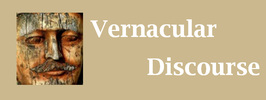|
Analogy & Simile
|
analogy draws an explicit similarity relationship between things; a 16th century term, its closest Classical figure is simile, from the Latin similitudo, meaning 'like'
|
Examples
|
Literary Similes
Robert Burns My love is like a red, red rose P.G. Wodehouse As sore as a sunburned neck G.B. Shaw A parson is like a doctor, my boy: he must face infection as a soldier must face bullets. Victor Hugo There was a quivering in the grass which seemed like the departure of souls. |
Commonplace Similes
sleep like a log drink like a fish as bold as brass as good as gold as old as the hills as drunk as a lord as wise as an owl as mad as a hatter works like a charm as cunning as a fox as white as a sheet as quiet as a mouse as different as night and day |
Purpose
Roland Barthes
Humanity seems doomed to analogy.
Humanity seems doomed to analogy.
Analogy Describes & Categorizes
We commonly describe or categorize things in terms of other things. Analogy helps us describe and categorize a thing so that others can 'see' the thing described. Analogy aids cognition and shares similarities with descriptive figures like metaphor, metonymy, parody and simile. These 'analogies' describe complex things more vividly and familiarly.
Charles Dickens
[Dora's cousin was a man] with such long legs that he looked like the afternoon shadow of somebody else.
[Dora's cousin was a man] with such long legs that he looked like the afternoon shadow of somebody else.
Analogy Explains
Analogies provide shortcuts for talking about complex things that are easier for non-experts to understand.
|
Theoretical physicist Gian Giudice explains the Higgs boson with analogies to water and air at TEDxCERN, 2013
|
Astrophysicist Neil deGrasse Tyson explains the success of space technologies with shaving and lawn-mowing analogies at the 28th National Space Symposium, 2012
|
|
|
|
Analogy Argues
Analogies can provide argumentative proofs. Reasoning by analogy establishes a logos proof through similarity, but not everyone accepts analogical reasoning like the examples below as valid arguments. Rhetoricians are more likely to accept arguments by analogy than logicians are.
Bill Maher compares Donald Trump's possible cabinet appointees to toddlers.
Analogy, Simile & Metaphor
Simile resembles extended metaphor. Technically, simile suggests relationship similarity but metaphor asserts actual similarity. Compare:
|
Analogy by Simile
The minister upholds the state like a pillar which supports the weight of the whole edifice.
General Ludendorff: The English soldiers fight like lions.
|
Analogy by Metaphor
The minister is a pillar of state.
General Hoffmann: But don't we know that they are lions led by donkeys?
|
Similes signal similarity with 'like' or 'as.' But other structures signal similes, and some similes are only implied. Similes without 'as' or 'like' are more likely considered analogies.
Simile by Comparison
The errors are more obvious than the sun.
The sound was harsher than fingernails scratching a blackboard.
His behaviour reminded me of the worst kind of insurance salesman.
P.G. Wodehouse
So might a fastidious cook look at a black beetle in her kitchen.
I got a headache that started at the soles of my feet and got worse all the way up.
The sound was harsher than fingernails scratching a blackboard.
His behaviour reminded me of the worst kind of insurance salesman.
P.G. Wodehouse
So might a fastidious cook look at a black beetle in her kitchen.
I got a headache that started at the soles of my feet and got worse all the way up.
Simile by Implication
Winston Churchill
As his [Hitler's] armies advance, whole districts are being exterminated. Scores of thousands, literally scores of thousands of executions in cold blood are being perpetrated by the German police troops upon the Russian patriots who defend their native soil. Since the Mongol invasions of Europe in the sixteenth century there has never been methodical, merciless butchery on such a scale or approaching such a scale. And this is but the beginning. Famine and pestilence have yet to follow in the bloody ruts of Hitler's tanks. We are in the presence of a crime without a name.
Usage
Analogies are commonplace and persuasive. We can use them to:
|
provide proofs:
describe vividly: simplify complexity: categorize efficiently: |
Is the thing good/bad or right/wrong?
What is the thing like? What is the thing like? What is the thing? |
Make Analogies Fresh, Vivid & Precise
P.G. Wodehouse
He started to get pink in the ears and then in the nose and then in the cheeks till in about a quarter of a minute he looked pretty much like an explosion in a tomato cannery on a sunset evening.
He started to get pink in the ears and then in the nose and then in the cheeks till in about a quarter of a minute he looked pretty much like an explosion in a tomato cannery on a sunset evening.
Make your analogies fresh, vivid and precise. Imprecise analogies are as ineffective as mixed or faulty metaphors. Avoid also clichéd analogies. Arguments by analogy must be precise or audiences will invalidate them.
Compare these vivid and humorous similes from P.G. Wodehouse with less successful ones compiled by the Washington Post:
|
Good Similes of P.G. Wodehouse
|
Bad Similes of School Students
|


